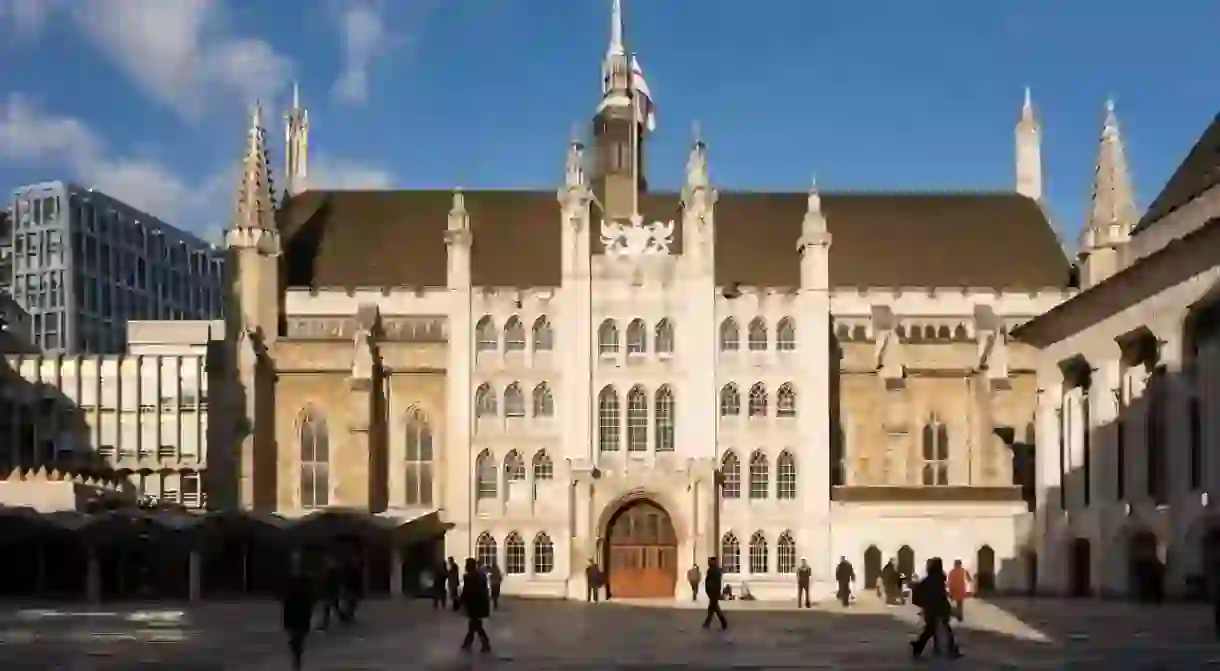A Walking Tour of the City of London’s Landmarks

Embark on walking tour of the City of London’s most incredible landmarks, taking in historic buildings, soaring skyscrapers and ornate churches.
Monument to the Great Fire of London
Building, Memorial

Designed by Sir Christopher Wren, the architect behind St Paul’s Cathedral, the Monument to the Great Fire of London was erected in 1677 to celebrate the rebuilding of the city following the devastating blaze that swept across the capital. The fire, which started at a baker’s on Pudding Lane, raged for four days and destroyed 86 percent of the City of London, making 130,000 people homeless. Wren came up with a design for a colossal 61-metre (200-foot) Doric column in honour of this tragic event, containing a stone staircase of 311 steps that lead up to a viewing platform, which is still in use today. Now, from Monument station, walk up Gracechurch Street to Leadenhall Market.
Leadenhall Market
Building, Market

This decorative market captures the essence of Victorian London with its spectacular ornamental detailing designed by Sir Horace Jones (also responsible for Smithfield and Billingsgate Markets). The late 19th-century building was used in the film Harry Potter and the Philosopher’s Stone (2001) to represent the area of London around the Leaky Cauldron and Diagon Alley. Leadenhall actually dates back to the 14th century, making it one of the city’s oldest markets, and stands in what would have been the heart of Roman London. Now, take a right on Leadenhall Street and walk along to Lloyd’s of London.
Lloyd’s of London
Building
An icon of High-Tech architecture, the Lloyd’s building was designed by Richard Rogers and Partners. Not too dissimilar from Paris’s Centre Pompidou in concept (another project Richard Rogers worked on, along with Renzo Piano), the structure was nicknamed the Inside-Out Building due to all its services being placed on the outside, giving it a futuristic, machine-like exterior. The 1980s design became the youngest building ever to achieve Grade I listed status, with The Architectural Review calling it “one of the most astounding artistic achievements of our time”. Now continue along Leadenhall Street and take the first left up St Mary Axe, passing by The Cheesegrater, another iconic building by Rogers.
30 St Mary Axe (The Gherkin)
Building, Bridge, Stadium

Bank of England
Building

Sir John Soane’s friendship with then-prime minister William Pitt led to his appointment as architect to the Bank of England – but sadly, his redesign of the bank was largely demolished in the 20th century. However, you can still see Soane’s impressive windowless walls on Bartholomew Lane, plus a statue of Soane posing as a Greek god. You can find out more about his original design in the Bank of England Museum. Soane’s other major works in London include his home in Lincoln’s Inn Fields – an Aladdin’s cave of antiquities and architectural salvage that’s open to the public for free – plus Dulwich Picture Gallery, Britain’s first purpose-built public art gallery. Now, turn right up Princes Street and then left onto Gresham Street.
Guildhall
Building
St Mary-le-Bow
Church

No 1 Poultry
Building

People either love Sir James Stirling’s work or they hate it. This iconic Postmodern building is considered his last work in England and was completed in 1998. Mies van der Rohe’s earlier scheme for this building was rejected and there was a conservation battle over the fate of several other listed buildings on the site, including the Mappin & Webb building, but Stirling’s scheme gained approval at a second public enquiry. An iconic feature of the building is the turret with an inset clock and two cantilevered glass viewing platforms to either side, which is part of Stirling’s dynamic play of geometries. You can now return to Bank station, having taken in many of the most unmissable sights of the City of London.













